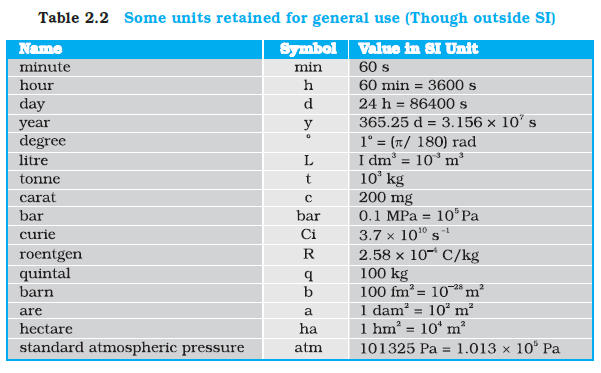Units and Measurement Parallax Method , ERRORS , basic formulas and study materials
+*Average distance of earth and sun or between any astronimical object is known as atronomical distance or astronomical units (AU)
*Distance travelled by light in vaccume in 1 year is known as light year (LG)
* 1°= 60 ‘ MINUTE
1’=60’’ SECONDS
360°= 2π RADIAN
1 RADIAN = 360\2 π = 180 π
various system of units = FPS ,MKS,CGS
Fundamental units = It is defined by international system of units (SI)The fundamental units are the units of the fundamental quantities (Ex- meter,mass,temp)
Supplementary units = Supplementary units are the units that can be derived from the help of the fundamental units (ex- Force= mass x acceleration)
THE INTERNATIONAL SYSTEM OF UNITS
In earlier time scientists of different countries were using different systems of units for measurement. Three such systems, the CGS, the FPS (or British) system and the MKS
system were in use extensively till recently.
The base units for length, mass and time in these systems
were as follows :
• In CGS system they were centimetre, gram and second
respectively.
• In FPS system they were foot, pound and second
respectively.
• In MKS system they were metre, kilogram and second
respectively.
The system of units which is at present internationally accepted for measurement is the Système Internationale d’ Unites (French for International System of Units),
abbreviated as SI.
SI BASE QUANTITIES AND THERE UNITS
Some units retained for general use (Though outside SI)
Measurement of Large Distances
Large distances such as the distance of a planet or a star from the earth cannot be measured
directly with a metre scale. An important method in such cases is the parallax methodWhen you hold a pencil in front of you against
some specific point on the background (a wall)
and look at the pencil first through your left eye
A (closing the right eye) and then look at the
pencil through your right eye B (closing the left
eye), you would notice that the position of the
pencil seems to change with respect to the point
on the wall. This is called parallax. The
distance between the two points of observation
is called the basis. In this example, the basis is
the distance between the eyes.
 To measure the distance D of a far away
To measure the distance D of a far awayplanet S by the parallax method, we observe it
from two different positions (observatories) A and
B on the Earth, separated by distance AB = b
at the same time as shown in Fig. 2.2. We
measure the angle between the two directions
along which the planet is viewed at these two
points. The ∠ASB in Fig. 2.2 represented by
symbol 𝛳 is called the parallax angle or
parallactic angle.
As the planet is very far away, 1, b
D
<< and
therefore, 𝚹 is very small. Then we
approximately take AB as an arc of length b of a
circle with centre at S and the distance D as
the radius AS = BS so that AB = b = D 𝛳 where
𝛳 is in radians.
D= B/𝛳
Having determined D, we can employ a similar
method to determine the size or angular diameter
of the planet. If d is the diameter of the planet and the angular size of the planet (the angle
subtended by d at the earth), we have 𝞪 = d/D (2.2)
The angle can be measured from the same location on the earth. It is the angle between
the two directions when two diametrically opposite points of the planet are viewed through
the telescope
EXAMPLES


ACCURACY, PRECISION OF INSTRUMENTS AND ERRORS IN MEASUREMENT
(Important)
Measurement is the foundation of all experimental science and technology. The result
of every measurement by any measuring instrument contains some uncertainty. This
uncertainty is called error. Every calculated quantity which is based on measured values,
also has an error. We shall distinguish between two terms: accuracy and precision.
Known more about ERRORS IN MEASUREMENT











1 Comments
Don't forget to share with your friends
ReplyDelete